- Home
- James A. Michener
Sports in America Page 13
Sports in America Read online
Page 13
I am not, however, much impressed by obese publicity-seekers who proclaim, ‘Whenever I feel the need for exercise, I lie down till it goes away.’ Or, ‘The only exercise I ever do is reaching out for a second martini.’ Or, ‘The only exercise I get is serving as pallbearer at the funerals of my friends who exercise.’
These are witty statements, but I have observed that most of the men who make them die prematurely.
I defend sports as a means of obtaining exercise pleasurably. I am more impressed with sports as a developer of health than as a developer of character, and I want to see them prosper for health reason, because I know of no other human activity which so well serves that purpose.
FOUR
Children and Sports
When my interest in automotive sports was at a height, and I was traveling to various tracks to watch the leading figures, a friend grabbed my arm as I was talking with Mark Donohue—the chubby-faced marvel who would be killed within the year—and said, ‘Why are you traveling so far from home? You have one of the most interesting tracks right in Doyleatown.’
I could not credit these words, for I thought I knew my hometown and I’d never heard of a racing track, but he made a date with me for the next Friday night and drove me to a small field near the shopping center, and there introduced me to a new world.
The track was one-eighth of a mile in circumference, its turns lined with bales of hay. Eight tall poles held bright lights and four loudspeakers, even though the area was so small that a strong-voiced man could have been heard if he used a megaphone. I would learn later in the evening that the loudspeakers were an essential part of racing.
As we approached the track entrance I saw several large vans attached as trailers to touring cars. The most interesting was painted with red and white stars and bore the proud legend: The Fighting Rigbys. American’s Best.
When we reached the track itself a woman pointed to a grandstand on whose plank boarding we were invited to sit, and for the first time in my life I saw minicars circling the dirt raceway at high speed. They were being driven by young boys, nine or ten years old, I thought, and one of the drivers was first rate.
He wore a red scarf and a sign on his car which proclaimed him to be the Red Baron. He liked to weave in and out, and cut rivals off at the turns. He wore a helmet, leather gloves and a leather jacket, and he was at nine or ten a much better driver than I had ever been. I noted especially that he was ruthless in riding his opponents down and forcing them into the bales of hay. He was obviously destined to be a big-league driver when he grew up, for he had all the moves.
And then something happened, or someone said something, that made me wonder about the age of that boy. I turned to the two women sitting next to me and asked, ‘How old is that kid?’
‘You mean the Red Baron?’
‘Yes.’
‘He’s my son,’ the woman said proudly. ‘He’s one of the Fighting Rigbys.’
‘I saw your trailer outside. Very impressive. Where you from?’
‘North Jersey.’
‘What you doing down this way?’
‘Where there’s cups to be won, we go,’ she said, pointing to a table where six silver cups waited to be handed to the victors that night.
‘How old is your son?’ I asked.
‘Five,’ she said. And I looked at the speed demons as they whirred around the track, and things fell into place.
These drivers were five years old! And the reason the Red Baron was able to push so many of them into the bales of hay was that he was already a long-time professional, coached by a dedicated mother and father, while the others were terrified beginners barely able to keep their cars on the track.
‘Look at him go!’ the mother shouted. ‘Keep hittin’ ’em, Roger!’ And on he sped, in his leather outfit and large helmet.
When the race ended the announcer cried ecstatically, ‘Now watch as he takes his triumphal turn! Here he comes, the Red Baron, undefeated in eleven races and our new champion!’ The little boy was handed a checkered flag, which he held aloft in his right hand as he made a solo turn of the track. And over the loudspeakers the announcer kept roaring for applause to mark his progress.
I spent most of that night talking with Mrs. Rigby. She had two boys and a girl in competition and she expected each of them to win a cup. ‘We brought three cars with us, each specially tuned for its own driver.’
‘What do they cost?’
‘We use a special Japanese quarter-horsepower engine. Our cars cost about eighteen hundred dollars each, but with ’em we win.’
She told me the family was buying a fourth car next week. ‘That’s why we needed the larger trailer. My husband and his brother painted it last week. Looks pretty snazzy, eh?’
I told her it was outstanding, the one I noticed first when I drove in. As I talked I became aware of a young child sitting beyond the two women, a little girl staring intently at the racing, and it began to dawn on me, if I can use that word to describe something which occurred at night, that the Rigbys were buying their fourth minicar for this baby.
‘How old is she?’ I asked.
‘Fleurette? She’s four.’
‘And the new car’s for her?’
‘Yes. You gotta start ’em young. Already she could beat most of the boys you saw in that last race.’
I turned my attention to Fleurette, a very pretty blond pig-tailed little child. She could barely speak in sentences, but when her older brother Victor revved his car up for the nine-year-old race, she became excited. ‘Give it to ’em, Vic,’ she shouted.
He did. So did Flora Mae, the twelve-year-old girl. That night the Rigbys won three silver cups, and the announcer called their names so often that at the end he went into a rhapsody about this remarkable family who showed the rest of us how it ought to be done. He called for Mr. Rigby, a salesman in his late thirties, to step forward as an example of a devoted father who really looked after his kids, and I saw that Mr. Rigby was the tall, thin man who had been so active in the pits, adjusting carburetors and coaching his children when to make their big moves as the races progressed. He was the most important single person at the track that night, except perhaps for the tireless announcer, who kept up a drum-roll of chatter, telling the audience what it could see for itself.
‘The announcer seems to talk a lot,’ I said to Mrs. Rigby.
‘It wouldn’t be a ace without him,’ she said. ‘Very dull, Just the cars whizzing around.’ And it occurred to me that in an age of radio and television the audience had lost the capacity to see an event unaided; we needed to be told what was happening, what its significance was, how it compared with other like happenings. Birmingham fans had told me that they enjoyed University of Alabama games more if they switched on the television image, turned down the volume to nothing and listened to the radio broadcast of Doug Layton over Station WERC. ‘He gives you more words,’ a devotee told me. ‘He explains better just what’s happenin’ down there on the field, and you feel more intimate.’
At four years of age Fleurette Rigby would enter this exciting world of minicar racing. She would be driving a gasoline engine that could make better than twenty-two miles an hour, and she would be competing with families who had spent between $900 and $1,900 for their cars. Few of the $900 cars would win, because the more costly the car, the more delicately balanced its carburetors, the better its performance. And there would be few boys and girls of five capable of taking on this little demon.
‘Her brothers and her sister train her every day,’ Mrs. Rigby told me. ‘Right now she’s big-time.’
I was appalled to think that this baby had already entered professional sports, and I was brooding as to the implications of this fact when the drivers of the midget cars began to assemble at the middle of the field.
The announcer raised the decibels as he told us, ‘Tonight we bid farewell to one of the most gracious competitors we have ever had on this track. Miss Julie Jackson had her sixteenth birthday
last week, and she’s no longer eligible. Miss Julie, we bid you a fond farewell.’
Into the ring her father and mother lugged a huge birthday cake, which they cut into many slices. The Red Baron grabbed his, ate it in two gulps, and went back to his car, but the other children in their leather outfits clustered about long-legged Julie Jackson and shook her hands and kissed her and told her how much they had enjoyed competing against her.
‘She was a real winner, folks,’ the announcer bellowed. ‘She was a credit to her sex, and there was many a boy who ate her dust as she reached for the checkered flag. She was a real champion, folks.’ Some women near me were crying, for Julie had been a terror on the track.
‘And now, her last ride, folks. Let’s hear a great big hand for a great big champion?’
Julie put on her helmet, climbed into the car her father wheeled out for her, and started a culminating turn around the track while the other kids munched her birthday cake. As she passed the starting line an official reached out and handed her the checkered flag. Driving at maximum speed, she slid into the curves, holding her flag aloft, and the spectators cheered as the announcer droned on with his incessant and metallic spiel.
I leaned over to ask Fleurette Rigby if she intended to be a champion one day, but she merely looked up at me with baby eyes and asked, ‘Huh?’
In this unexpected way I was introduced to the jungle world of juvenile sports competition. Because I wanted to understand the system at its best, and see it with everything in its favor, I sought out an old-time college champion, a distinguished former athlete named Joe Tomlin. I remembered him as a big, amiable guy who had played a formidable game of football and who had loved the game so much that upon graduation he had cast about for some way to remain associated with it. He hit upon the bright idea of organizing the Pop Warner Junior League Football, named after the much-loved coach of the Carlisle Indians. He became its champion and its czar, and achieved a remarkable success in establishing leagues across the country.
Through the years I had followed Joe’s restrained promotional activities and approved of the solid manner in which he constructed his empire. A good scholar himself, he had postulated an unusual scoring system for determining his champions:
The evaluation formula takes into consideration a team’s scholastic as well as its football record. Scholastically each player’s average is converted into a numerical point value. The player point values are then added and divided by the total number of players on the roster to determine the point average of the team. This scholastic average is then added to the point value of the team’s won-tied-lost record. The result is then divided by two to determine the final point standing of the teams.
Tomlin conceded that under this system, which many tough-minded coaches ridiculed, it would be possible for a team with an 8–1 record and high grades in school to win the championship from a team with a perfect won-lost record but poor grades. ‘But this almost never happens,’ Joe says. ‘The best team on the field is usually the best team in the classroom, too.’
I began attending Junior League football games on Friday nights and found them to be pretty much as Tomlin described them in his literature:
The general objective of Pop Warner Junior League Football is to inspire youth, regardless of race, creed or national origin, to practice the ideals of sportsmanship, scholarship and physical fitness as reflected in the life of the late Pop Warner. The specific objectives of the program are to familiarize all boys with the fundamentals of football, to provide an opportunity to play the game in a supervised, organized and safety-oriented manner, and to keep the welfare of participants free of any adult ambition and personal glory.
Note the last clause. Youth leagues have been severely criticized because of the misbehavior of parents. Tomlin was determined to keep his free of this aberration, and because football does not depend upon an umpire’s calling every ball and strike, it lends itself less to parental fury than baseball. At any rate, in the games I saw, the kids played and not the parents, but I was told later by one of the coaches that ‘Moms can be hell on wheels if you don’t play their kids.’
But even in this favorable atmosphere certain questions began to arise. The teams I watched were divided into seven categories, according to age and weight: Tinytot, Junior Peewee, Peewee, Junior Midget, Midget, Junior Bantam and Bantam. The Tinytots could be eight, nine or ten and weigh no more than sixty-nine pounds. The Bantams could be thirteen, fourteen, fifteen or sixteen and weigh no more than a hundred and fifty-six pounds. Each team had to be fully suited, with complete gear, and I wondered if boys of eight, weighing forty pounds, were really ready for heavy contact sport. I think football should be delayed till age eleven.
My apprehension certainly did not bother them. Nor their parents. I remember attending one Tinytot game and sitting near a group of mothers. When one of the eight-year-olds made a flying tackle, ‘Just like on television,’ one of the women said, the others shouted, ‘Way to hit, Tommy! Way to hit!’
I was told that the league had wanted to adopt the sensible rule that whenever a team got ahead by sixteen points, all its substitutes had to be put into the line-up so as to give the trailing team a chance to catch up. ‘But we couldn’t enforce the rule. Mothers especially wanted their gifted sons to play the whole game and score the maximum number of points.’
‘Why?’ I asked.
‘If a Tinytot shows real skill as a backfield runner or a receiving end, he may get some kind of special treatment in junior high.’
‘What kind of special treatment could he possibly get?’
‘Oh, his family could be invited to move into a better house in another district and pay no rent. Where they had a top team. And there he’d attract the attention of the high schools in the region, and he might be invited to join the best team here. And after that, a full college scholarship. These kids are playing for gold, and their parents know it.’
On the other hand, the rules are well conceived to protect the youngsters. Spearing—driving one’s helmeted head into a fallen player—is forbidden. Coaches are not allowed to send their overweight players to steam rooms, or put them in rubber suits, or administer diuretics to reduce water content of the body in order to help them make weight. Footballs of a smaller size are used by the youngest teams. Time of quarters is reduced for the younger players. And Tinytots are not permitted to play post-season bowl games. (Junior Peewees, aged eight through ten, may compete in bowl games if they are held within 150 miles of home.)
From its inception, Junior League football has made a special effort to win the support of mothers, aware that opposition from the quarter would doom the program. Early in the prospectus governing the system, tribute is paid to women:
Pop Warner Football is a family activity. The women of Pop Warner families also take an active part in the program. The mothers staff Pop Warner women’s clubs and handle concession stands at ball games. They also take part in fund-raising drives and other related activities, while young sisters of Pop Warner players form cheerleaders, twirlers and pompon groups. Parents should be encouraged to enjoy their son’s participation and allow him to enjoy it. Both will be richer for the experience.
This accounts for a phenomenon which struck me whenever I attended a Junior League game. In addition to the little boys dressed in full gear, each team had a cheering corps consisting of little girls dressed in grown-up cheerleader costumes. They were known as cheerleader-mascots and they maintained a steady chant throughout the game, waving their pompons ‘Just like on television,’ the woman in front of me said. And girls who did especially well could compete for the national title of L’il Miss Pop Warner, who would reign for one year, complete with a court of three princesses chosen from the runners-up. In 1973 Kathi Kerr—of the Scottsdale, Arizona, Cowboys—did not win the competition, but she did gain honorable mention for her original cheer.
Hea you guys we’re rootin’ for you!
Let’s give a cheer for the Gold
and Blue!
There goes the whistle. It’s time to begin.
You’ve won before. You can do it agin!
Don’t take it easy or nice and slow.
Get on out there and GO, GO, GO!
The speaker at the national banquet that year was Spiro Agnew, and he paid high tribute to the lessons that could be learned in Junior League football:
Football as we know it is a uniquely American game, emphasizing some of the finest aspects of our national character. We are a competitive people, and it is the spirit of competition which has made our economic system the envy of the world. It’s the competitive spirit among the young that causes excellence in adult life … There’s an extra dimension in the life of any city that finds a truly great major-league athletic team, and thanks to George Allen and his Redskins, Washington has people that just walk a bit taller these days.
Junior League football certainly sponsored competition. It printed badges containing yells to encourage the team’s rooters, and some of them got right down to the nitty-gritty:
Slay the Aces
Scalp the Apaches
Batter the Bantams
Destroy the Blue Devils
Massacre the Braves
Crush the Chiefs
Mangle the Matadors
Stomp the Moccasins
After a steady diet of this from age eight through sixteen, it would seem that the boys could only escalate to machine-gunning the opposition high school, atom-bombing Notre Dame and hydrogen-bombing the Dallas Cowboys.
A real effort was made to inculcate a spirit of sportsmanship, but I noticed that it required forty-two pages of closely printed rules to keep the leagues orderly, with a group of twelve intricate procedures for conducting a hearing when rules were broken:

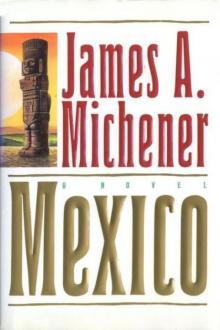 Mexico
Mexico The World Is My Home: A Memoir
The World Is My Home: A Memoir Sayonara
Sayonara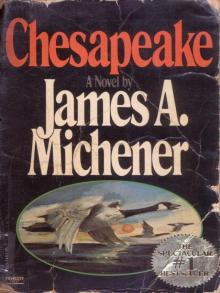 Chesapeake
Chesapeake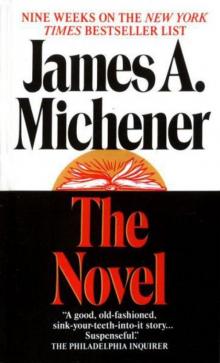 The Novel
The Novel Rascals in Paradise
Rascals in Paradise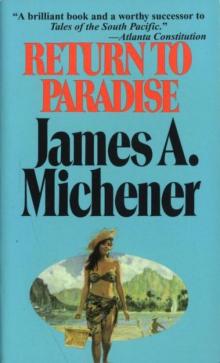 Return to Paradise
Return to Paradise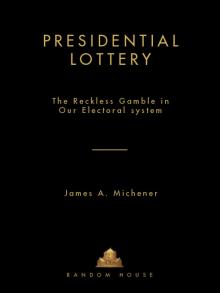 Presidential Lottery: The Reckless Gamble in Our Electoral System
Presidential Lottery: The Reckless Gamble in Our Electoral System The Source
The Source Poland
Poland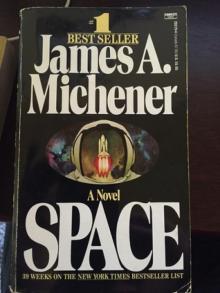 Space
Space Caravans
Caravans Creatures of the Kingdom: Stories of Animals and Nature
Creatures of the Kingdom: Stories of Animals and Nature Iberia
Iberia Hawaii
Hawaii The Watermen: Selections From Chesapeake
The Watermen: Selections From Chesapeake Report of the County Chairman
Report of the County Chairman The Covenant
The Covenant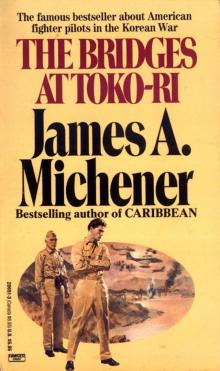 The Bridges at Toko-ri
The Bridges at Toko-ri Matecumbe
Matecumbe Journey: A Novel
Journey: A Novel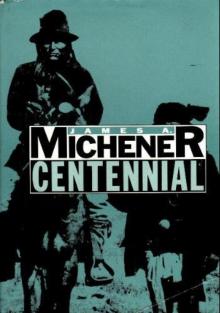 Centennial
Centennial Sports in America
Sports in America Texas
Texas Miracle in Seville
Miracle in Seville This Noble Land: My Vision for America
This Noble Land: My Vision for America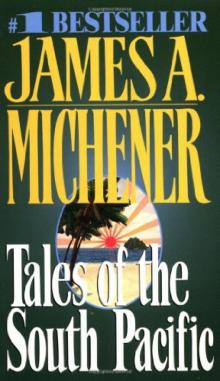 Tales of the South Pacific
Tales of the South Pacific Bridges at Toko-Ri
Bridges at Toko-Ri Space: A Novel
Space: A Novel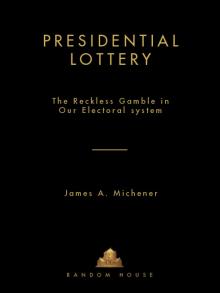 Presidential Lottery
Presidential Lottery Sayonara: A Novel
Sayonara: A Novel This Noble Land
This Noble Land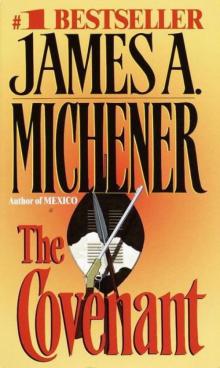 The Covenant: A Novel
The Covenant: A Novel Miracle in Seville: A Novel
Miracle in Seville: A Novel The Bridge at Andau
The Bridge at Andau Source
Source The Source: A Novel
The Source: A Novel Journey
Journey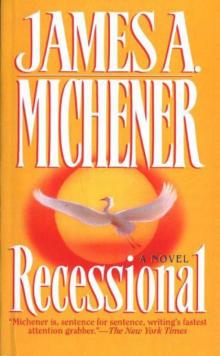 Recessional: A Novel
Recessional: A Novel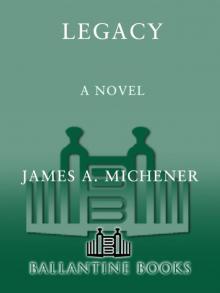 Legacy: A Novel
Legacy: A Novel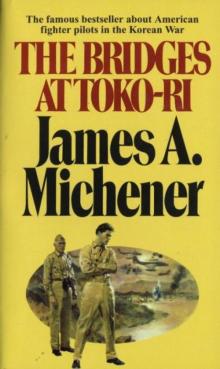 The Bridges at Toko-Ri: A Novel
The Bridges at Toko-Ri: A Novel Poland: A Novel
Poland: A Novel